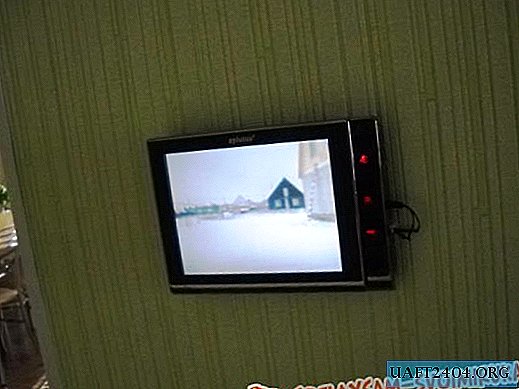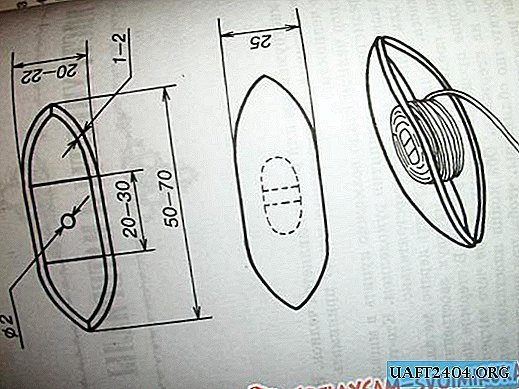Share
Pin
Tweet
Send
Share
Send

Consider the basic elements of a limited access system that will be needed for installation:
- electromagnetic or electromechanical lock (for example, Polis-1M);
- multicore six-wire power copper wire (double insulation) with a cross-section of 0.5 sq. mm, if the distance from the door station to the doorphone will be small, you can use the usual twisted-pair network version (four from the door station video doorphone and two power supply from the UPS to the controller);
- uninterruptible or backup power supply (UPS), with a battery of a given power, in order to provide a certain period of power without an external home network (for example, SKAT-1200);
- two-core power copper wire (double insulation) with a cross section of 0.75 sq. mm (UPS power supply);
- two-core power copper wire (double insulation) with a cross section of 0.5 square mm (from the UPS to the intercom);
- a calling panel, with a call button, having a microphone and a video camera;
- the access key reader and, accordingly, the Dallas keys themselves for the reader;
- controller Z-5R;
- video intercom with monochrome or color screen.

The territory of the private house is fenced around the perimeter, and the gates for the entrance of vehicles and the entrance gate are closed from the inside, and are equipped with an access restriction system. An entry panel, a key reader and an electromechanical or electromagnetic lock are installed at the entrance gate. The electromagnetic lock must be constantly powered, it holds the gate through electromagnetic forces, therefore, more energy-dependent.

The controller can be installed in a protective box or waterproof case and serves to control the operation of the lock, allows you to open it by touching the key to the reader.

An uninterruptible power supply is mounted in a room close to an electricity input panel with package switches. The electrical wiring will be in this order:
- 4-wire line from the video intercom to the calling panel;
- 2-wire reinforced line to the UPS from a household electrical outlet, 220 volts;
- 2-wire line from the UPS to power the controller, 12 volts;
- 2-wire line from the UPS to power the video intercom, 12 volts.
The video on-door speakerphone is installed in any place convenient for you. As an intercom, I used an inexpensive device from the Chinese manufacturer Eplutus EP-2288 with a color display and a call button equipped with a camera and microphone. He has a call panel with a camera of good resolution, enclosed in an anti-vandal waterproof housing. There is no audio handset to communicate with the visitor, as in this model a speakerphone is implemented. In addition, the video intercom is equipped with two audio-video inputs, so you can connect an additional two more cameras and increase the visibility of the protected area.
The use of the limited access system is as follows, when a button is pressed on the door panel of the fence of the site, a signal is sent to the video intercom. In the doorphone, the video function is automatically activated and the microphone is turned on. To remotely open the lock on the gate of the entrance gate, just press the intercom button. In addition, the installed controller and Dallas key reader allows you to open the lock outside the protected area using encrypted electronic keys. In this case, with the necessary level of protection of the site, the penetration of unauthorized persons is effectively limited.

In order to provide power to this system, an uninterruptible power supply was required, producing a voltage of 12 volts, capable of powering the intercom, controller and electromechanical lock, even in the absence of external power. If you have turned off the external power supply, then the backup power source for a day or more will provide operation from the battery of the entire system.

The controller mounted in a separate housing is used to ensure the operation of the lock, the reader and key programming. Connection to the controller of all elements is carried out according to the instructions in the kit. Using the specified algorithm specified in it, it is possible to copy access keys, for example, if necessary, expand the circle of people to enter the territory or in case of loss. The keys for the reader are programmed in any quantity, and you can distribute them to everyone with access to the territory of the house. The cost of the access key is also low; accordingly, the key can be programmed for all persons who will be able to enter the site unhindered at any time. By the way, do not worry about the possibility of getting to you undesirable guests, even those who have an access key, for example, if it is lost. You can easily reprogram all the keys in a matter of minutes or use the master key to block the lock from opening with all the other keys, just one touch to the reader will be enough. The whole system can be equipped with security sensors attached to the controller, which will signal the siren when the door or window opens.


When installing the entire system, I encountered incorrect operation of the controller and the video intercom with an electric lock. After several trial and error, I determined the cause. The voltage supply from the video intercom to the lock and the key reader are not separated (these are two systems working in parallel), in order to separate them, it was enough to put simple diodes that pass current only one way, allowing it to operate separately.
Share
Pin
Tweet
Send
Share
Send











